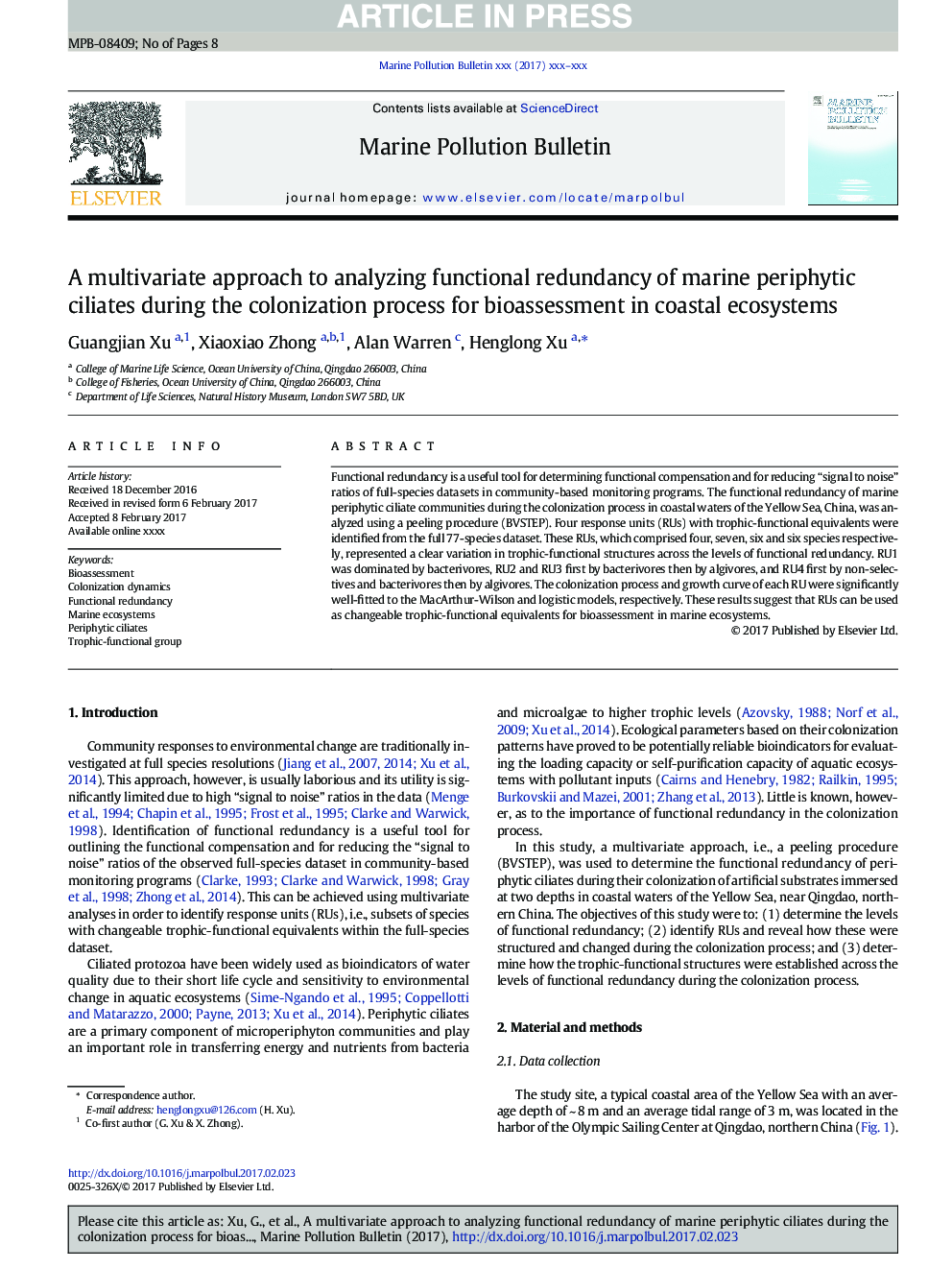| Article ID | Journal | Published Year | Pages | File Type |
|---|---|---|---|---|
| 5757552 | Marine Pollution Bulletin | 2017 | 8 Pages |
Abstract
Functional redundancy is a useful tool for determining functional compensation and for reducing “signal to noise” ratios of full-species datasets in community-based monitoring programs. The functional redundancy of marine periphytic ciliate communities during the colonization process in coastal waters of the Yellow Sea, China, was analyzed using a peeling procedure (BVSTEP). Four response units (RUs) with trophic-functional equivalents were identified from the full 77-species dataset. These RUs, which comprised four, seven, six and six species respectively, represented a clear variation in trophic-functional structures across the levels of functional redundancy. RU1 was dominated by bacterivores, RU2 and RU3 first by bacterivores then by algivores, and RU4 first by non-selectives and bacterivores then by algivores. The colonization process and growth curve of each RU were significantly well-fitted to the MacArthur-Wilson and logistic models, respectively. These results suggest that RUs can be used as changeable trophic-functional equivalents for bioassessment in marine ecosystems.
Related Topics
Physical Sciences and Engineering
Earth and Planetary Sciences
Oceanography
Authors
Guangjian Xu, Xiaoxiao Zhong, Alan Warren, Henglong Xu,
